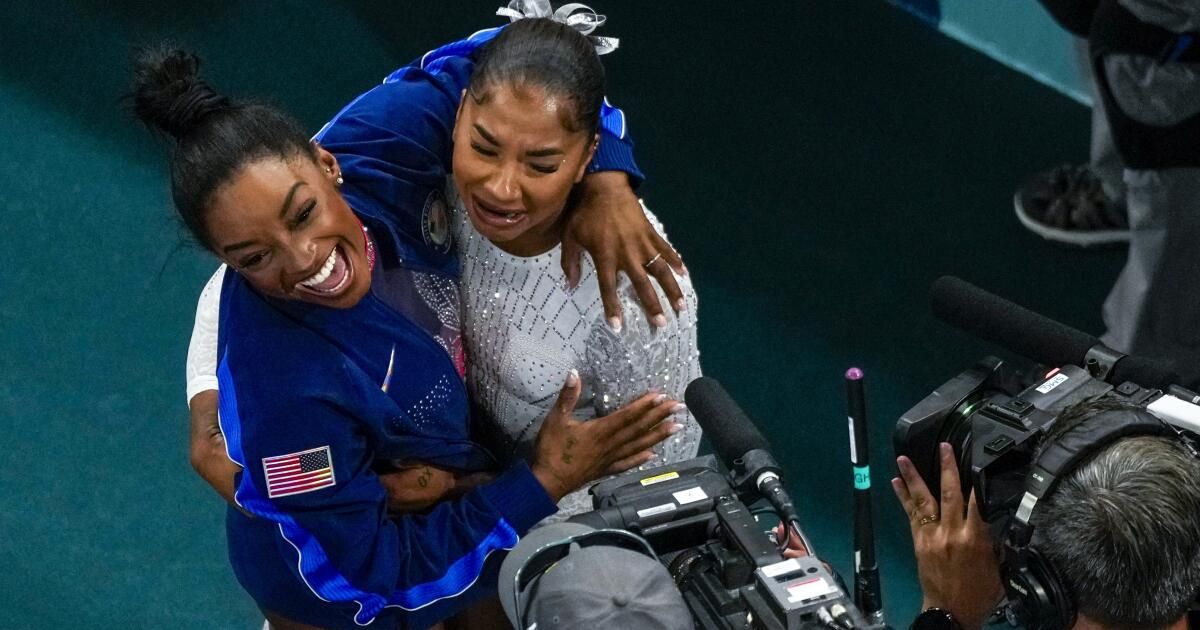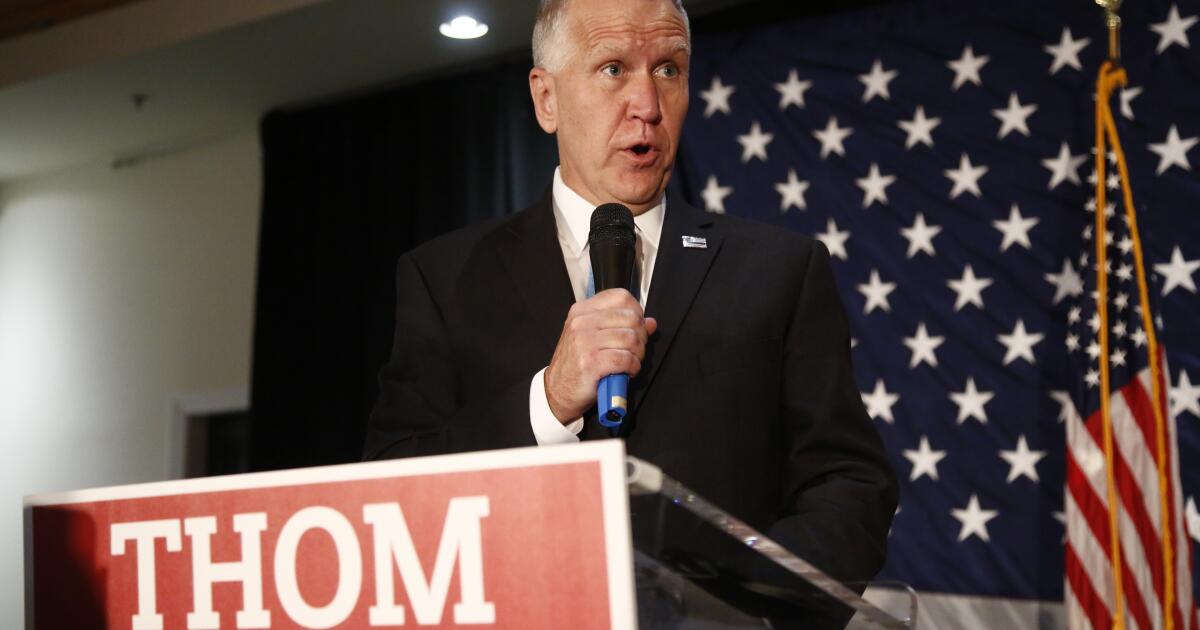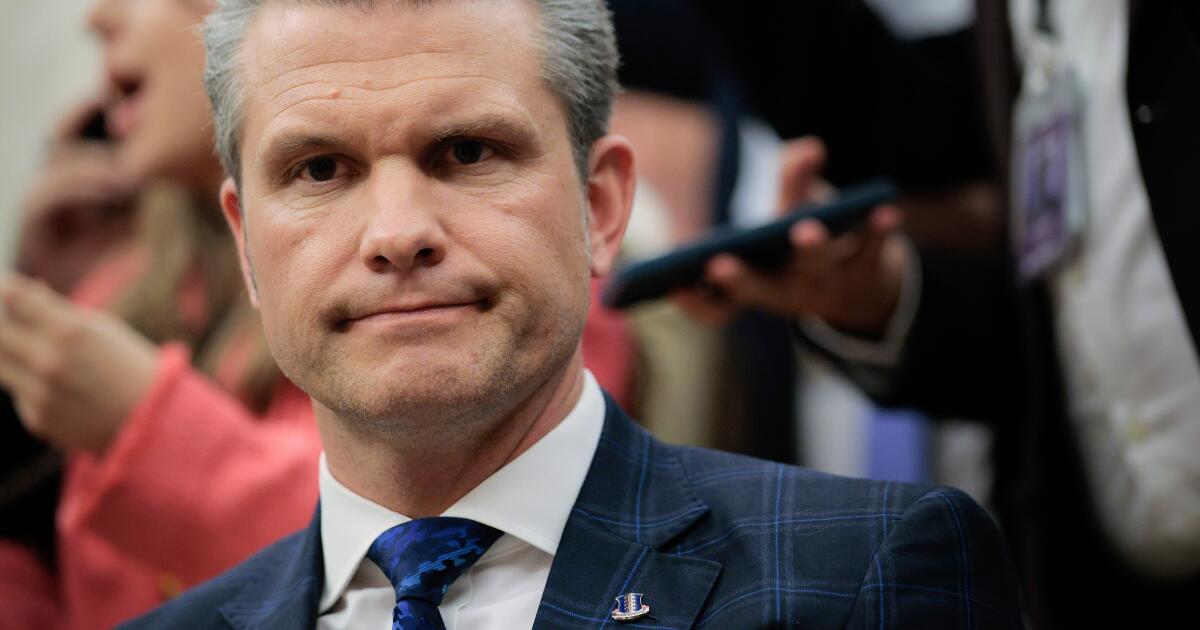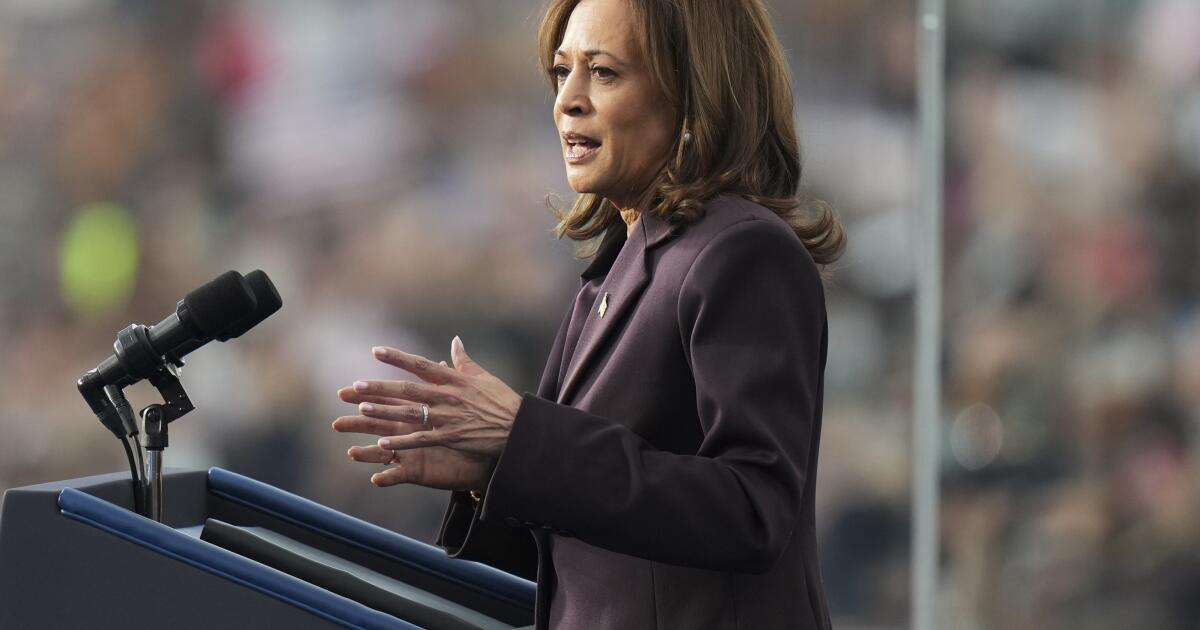As Los Angeles prepares to host the 2028 Olympics, it could also be the next success story in how to groom a new generation of gymnastics superstars.
Think back to the scenes in Paris this summer — moments when Simone Biles and Jordan Chiles triumphantly shared the spotlight — and think about how they inspired young people across America, especially girls of color. But inspiration alone doesn’t make a gymnast competitive. Kids also need opportunities to learn the sport, which have long been scarce for people of color.
It’s not the top of the sport that needs to diversify — the 2024 medal ceremonies proved that victory is won. It’s all the worthy rungs below that need investment to expand their reach. Gymnastics in America’s cities and towns isn’t as diverse as it should be, and that limits the talent pool for the future.
The reasons are as complex as those behind other interrelated problems of race and income in our nation today. Los Angeles is a microcosm that helps explain why. And between now and the 2028 Games, the city has the perfect opportunity to demonstrate the solution, too.
Gymnastics requires talent, dedication and commitment over years of training. And also money and time. A young gymnast needs a program and a coach, but also parents with time and resources – parents who can, for example, take their child to practice at 4pm on a Wednesday. Every Wednesday. And probably Mondays, Tuesdays and Thursdays too.
Few cities, which tend to have larger minority populations, have public programs for young gymnasts. Most private opportunities are found in wealthier (and whiter) suburbs.
It’s not just about access. Black girls entering the sport can face unique obstacles, the result of a vicious cycle. Because there are few Black women in the sport, for example, coaches don’t always realize that our hair needs to be braided before being shaped into a bun. Or they don’t realize that our bodies may develop differently than those of young white women.
Coaches don’t mean to hurt, but this lack of understanding can lead to awkward moments and conversations. All of which can push talented young gymnasts of color away.
And so the ranks of young gymnasts tend to be white and middle-class. That remains true even as stars like Biles and, a decade ago, Gabby Douglas, spark interest among girls of color. Studies show that Only 10% of young gymnasts are blackalthough approximately 13% of girls in the US are black.
The statistics were much worse at all levels of the sport when I was the first black rhythmic gymnast to represent the United States on the world stage, competing in three world championships and the 1984 Olympic trials.
I was not included in the 1984 Olympic team, even though I placed fairly high at the world championships. One coach told me it was because I “stood out too much.” At the 1984 Games, only Cuba had one black gymnast.
Today, the highest echelons of this wonderful, beautiful sport are more diverse than I ever imagined. Only a concerted effort can maintain and develop American Olympic diversity and excellence. That's where the organizers of the Los Angeles Games come in.
My training took place at recreation centers in Detroit, with coaches from Ukraine. As a result, our gymnastics team thrived and produced multiple national champions, an Olympian, and members of the USA Gymnastics Hall of Fame.
But few cities offered gymnastics training like Detroit did back then, and even fewer do today.
One theme of the build-up to the 2028 Games is youth sports, and LA28, the organizing committee that will host the next Summer Games, is pouring millions of dollars in a program called PlayLA at city Recreation Department sites. But these do not include gymnastics facilities.
My challenge to LA28 is to ensure the future excellence and diversity of American gymnastics by building a historic stadium in one of Los Angeles’s neighborhoods of color. A dedicated gymnastics center would be an investment, but one that would have a significant and lasting effect on the community. It should be equipped with all the resources to serve a higher purpose after the television coverage and celebrations have moved on: training the next Biles, the next Chiles.
I know they're there. All they need is a shot.
Wendy Hilliard twice served as captain of the USA Rhythmic Gymnastics National Team and founded the Wendy Hilliard Gymnastics Foundation, which provides gymnastics training to underserved communities.











